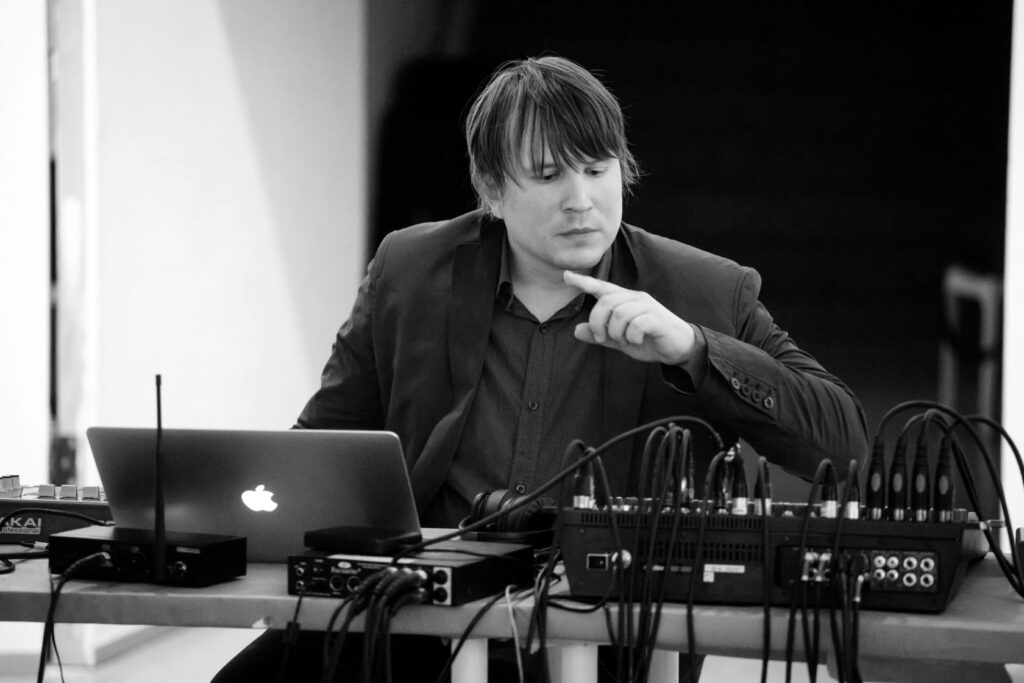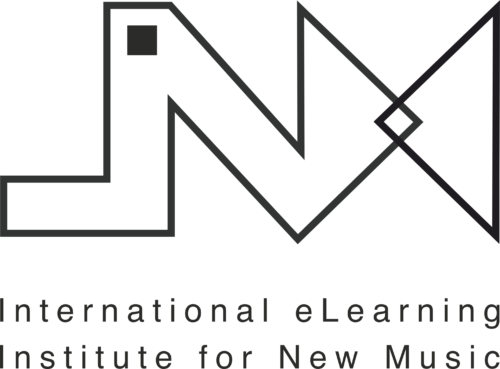Max: Foundations of Visual Programming for Sound and Interactive Media
- Next Semester Starts: Feb. 12, 2026
- Application Deadline: Jan. 5 , 2026
This course offers a comprehensive introduction to Max, a visual programming environment for creating sound and interactive media. Participants will explore Max’s modular architecture and its core domains (Max, MSP, MC, Gen, RNBO), gaining a solid foundation in dataflow programming.
Through hands-on practice, they will experiment with algorithms, design synthesizers, and explore interactive processes. Gradually, they will learn how to create polyphonic instruments, multichannel structures, and generative systems. By the end of the course, students will be ready to realize and present their own projects—ranging from Max for Live devices and standalone applications to multimedia works.
- What You’ll Learn:
- Build your own synthesizers in Max
- Explore polyphony & multichannel sound
- Structure reliable, portable Max projects
- Apply synthesis techniques in creative work

If you have questions or need assistance, our admissions team is here to help. Contact us here.
Course Overview:
This introductory course offers a structured path into Max as a creative and technical environment. Students will study the basics of data types, object families, and modular construction, and will put these tools into practice by developing original sound projects. Emphasis is placed on clear thinking in algorithms and data flow, with an eye toward practical results. Whether designing synthesizers, working with polyphony, or experimenting with multichannel sound, participants will gain both the foundation and the confidence to move toward their own projects in interactive media.
Duration of Course:
12 February 2026 – 14 April 2026 (6 lessons)
Application Deadline: 5 January 2026
Syllabus:
The program consists of six lectures and hands-on sessions:
1. Introduction to Max
● What Max is and what it can do.
● A brief historical overview: IRCAM, Miller Puckette, Opcode, Cycling ’74.
● Core data types: numbers, symbols, lists, signals, matrices, arrays, strings.
Main object domains: max, msp, jitter, mc, gen, rnbo.
● Communication with the external world: MIDI, audio, HID devices, serial protocols.
2. Outputs and Extensions
● Forms of distributing and presenting work: patch, project, Max for Live device, collective file, standalone application, plug-in, web code, C++ integrations, and custom Max objects.
● Library management: installing Packs, manual setup, and structuring resources.
3. Dataflow and Core Objects
● Working with commands and data in fundamental Max objects.
● Implementing simple algorithms (e.g., clock, calculator, game).
● Principles of data evaluation order in Max (right-to-left, top-to-bottom).
● Triggering and control flow: t, gate, toggle, button, sel, route, prepend, append.
Computational objects: +, -, *, /, expr, etc.
4. Building a Synthesizer
● Processing MIDI input into frequency and amplitude.
● Handling note on/off and velocity (0/non-0).
● Avoiding audio clicks with line~.
● Envelopes: line~, adsr~, and envelope design strategies.
5. Polyphony and Project Structuring
● Implementing polyphony using poly~.
● Separating control patch and synthesis engine patch.
● Internal patch replication with poly~.
● Best practices for structuring Max projects for portability and reliability.
6. Multichannel Processing with mc
● Difference between poly~ and mc.
● Handling multiple signals within a parent patch.
● Additive synthesis with mc.
● Spatialization techniques.
● Introduction to generative/self-composing systems (time permitting).
Learning Outcomes:
By the end of the course, students will be able to:
● Understand main synthesis techniques and their theoretical foundations;
● Build functional synthesizers for live performance and multimedia applications using Max;
● Implement polyphony, multichannel processing, and timbral modulation;
● Structure patches and projects for reliability, portability, and creative flexibility;
● Receive personalized feedback through close instructor guidance in a small-group environment.
Course-Specific Requirements:
Completion of the Foundations of Max course or equivalent knowledge.
Prerequisite Knowledge:
● Familiarity with Max’s environment and object types (from Foundations of Max or equivalent);
● Basic sound concepts: frequency, amplitude, overtones, decibels;
● Basic music theory: octaves, semitones, intervals;
● Digital audio principles: sampling rate, bit depth.
Who Can Apply:
Musicians, composers, sound designers, and multimedia artists interested in visual programming for sound and interactive media.
Technical Requirements:
Minimum:
● Computer capable of running Max 7;
● Headphones (e.g., Sennheiser HD 300);
● Max 7 installed.
Recommended:
● High-performance CPU;
● Audio interface (e.g., RME);
● Nearfield monitors (e.g., Genelec);
● Studio-grade headphones;
● Max 8 installed.
Online Guidelines:
● Stable internet connection for online sessions;
● Regular attendance and active participation;
● Assignments and projects submitted on time;
● Technical support provided for course materials and platform issues.
Tuition Fee:
● Full tuition for the semester course: 140 Euros
● Payment due within 7 days of receiving admission confirmation
Installment Plan:
● Payment may be split into two parts:
300 Euros within 7 days of admission confirmation
270 Euros one month after the semester begins (exact deadline communicated upon admission)
● Failure to complete the second payment by the stated deadline will result in dismissal from the semester program
Payment Methods:
● Credit/debit card via ILINM online payment system
● Bank transfer
Refund Policy:
● All payments are non-refundable
● Strict adherence to payment deadlines is required for participation in Academy activities
What is the course format?
● Small group setting to ensure personalized feedback and mentoring
● Active participation in online sessions and project work is required
Do I need prior experience with Max?
● Completion of the Foundations of Max course or equivalent
● knowledge is recommended, but beginners with a strong interest in sound and interactive media are welcome
What equipment do I need?
● Minimum: computer capable of running Max 7, headphones (e.g., Sennheiser HD 300), Max 7 installed
● Recommended: high-performance CPU, audio interface (e.g., RME), nearfield monitors (e.g., Genelec), studio-grade headphones, Max 8 installed
How do I pay the tuition fee?
● Payments can be made via credit/debit card through the ILINM online payment system or by bank transfer
Can I get a refund if I withdraw?
● No, all tuition payments are non-refundable
● Participation requires strict adherence to payment deadlines
Will I receive support during the course?
● Yes, technical support is provided for course materials and online platform issues
● Instructors offer close guidance and feedback throughout the course
Course Leader





